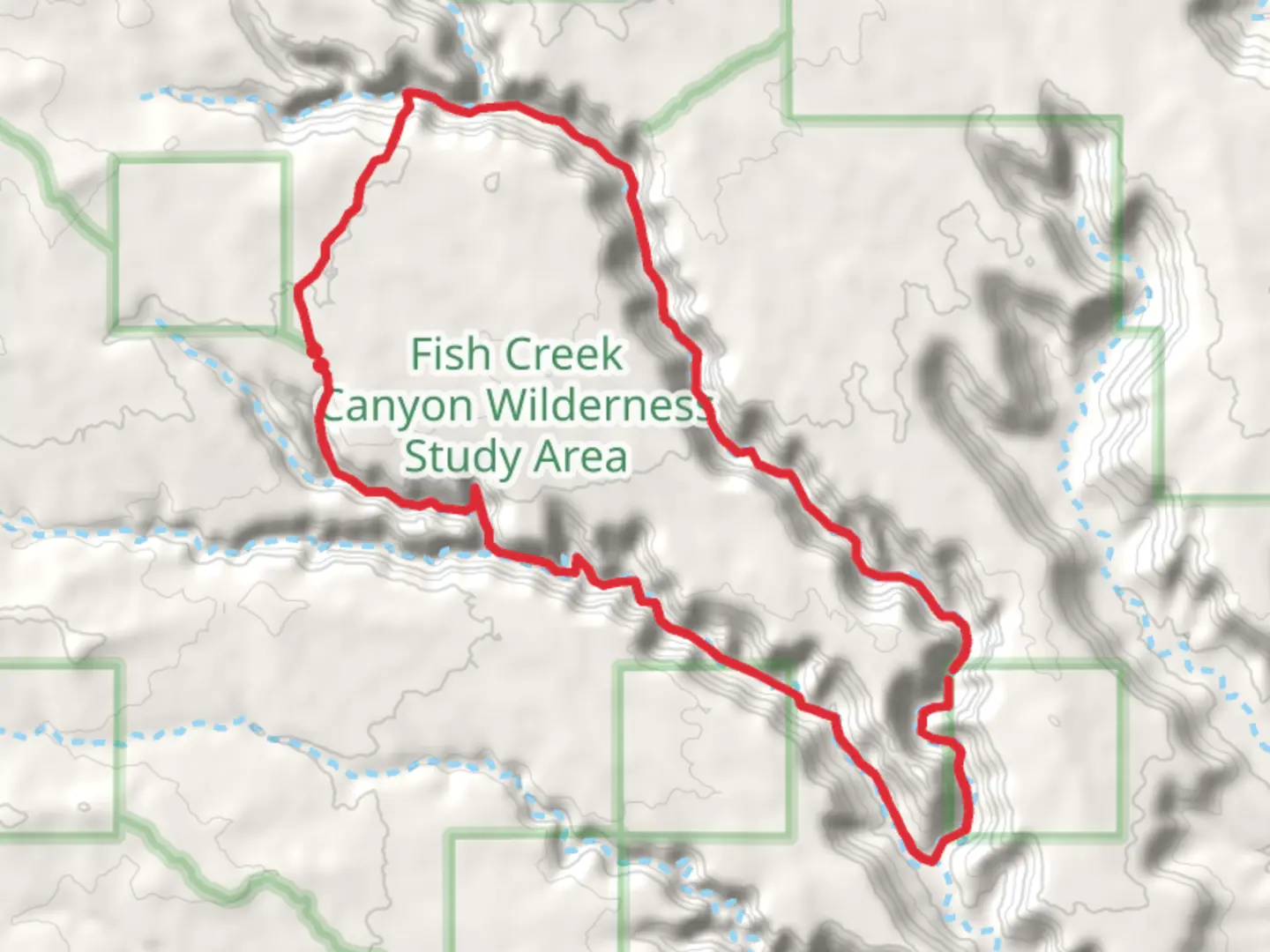
Download
Preview
Add to list
More
23.8 km
~2 days
573 m
Multi-Day
“Embark on the historic Fish and Owl Loop, where desert vistas meet ancient Puebloan echoes.”
The Fish and Owl Loop is a captivating journey nestled in the heart of Cedar Mesa, near San Juan County, Utah. This approximately 24-kilometer (15-mile) trek offers a moderate challenge with an elevation gain of around 500 meters (1640 feet), making it an engaging adventure for those with some hiking experience under their belt.Getting to the Trailhead To reach the trailhead, you'll want to navigate to the Cigarette Springs Road, which is accessible via Highway 261. The trailhead is located off this dirt road, and while it's generally accessible by most vehicles, conditions can vary, so a high-clearance vehicle is recommended. Public transportation options are limited in this remote area, so driving is your best bet. Using HiiKER to pinpoint the exact starting point will help ensure you're on the right path from the get-go.Navigating the Loop Embarking on the Fish and Owl Loop, hikers will be treated to a diverse array of landscapes, from the high desert's sagebrush and juniper to deep canyons lined with cottonwood trees. The trail is well-defined in places, but cairns and rock stacks often mark the route, so keep an eye out for these navigational aids, especially when the path becomes less obvious.Historical Significance and Landmarks As you traverse the Fish and Owl Loop, you'll be walking in the footsteps of ancient Puebloans. The area is rich in history, with numerous ruins and rock art panels that date back over a thousand years. Notable landmarks include the confluence of Fish and Owl Creeks, where hikers can find petroglyphs and dwellings etched into the canyon walls. It's a profound reminder of the region's historical significance and the enduring legacy of its original inhabitants.Flora and Fauna The diverse ecosystem supports a variety of wildlife, including mule deer, coyotes, and an array of bird species. The riparian areas along the creeks are particularly vibrant, offering a stark contrast to the surrounding desert environment. As you hike, keep an eye out for the unique cryptobiotic soil crusts that are crucial to the desert's health but are extremely fragile and can be damaged by foot traffic.Preparation and Safety Given the remote nature of the trail, it's essential to be well-prepared. Carry plenty of water—at least one gallon per person per day—as sources along the trail are unreliable and often dry. Be sure to treat any water you find before drinking. A map and compass, or the HiiKER app with downloaded maps, are essential for navigation, as cell service is spotty at best.Seasonal Considerations The best times to hike the Fish and Owl Loop are spring and fall when temperatures are milder. Summers can be scorching, with temperatures soaring well above comfortable hiking conditions, and winter brings cold temperatures and the possibility of snow.Trail Etiquette As always, practice Leave No Trace principles. Pack out all trash, camp on durable surfaces, and respect the cultural artifacts—look, but do not touch. The trail is also shared with backpackers, so day hikers should yield the right of way.By respecting these guidelines and preparing adequately, hikers can look forward to an enriching experience on the Fish and Owl Loop, where the echoes of the past meet the natural beauty of the present.
What to expect?
Activity types
Comments and Reviews
User comments, reviews and discussions about the Fish and Owl Loop, Utah.
4.9
average rating out of 5
10 rating(s)
